NOTE: For prior parts in the Hizballah Cavalcade series you can view an archive of it all here.
—
Liwa’a ‘Ammar Ibn Yasir: A New Shia Militia Operating In Aleppo, Syria
By Phillip Smyth ([email protected])
Click here for a PDF version of this post
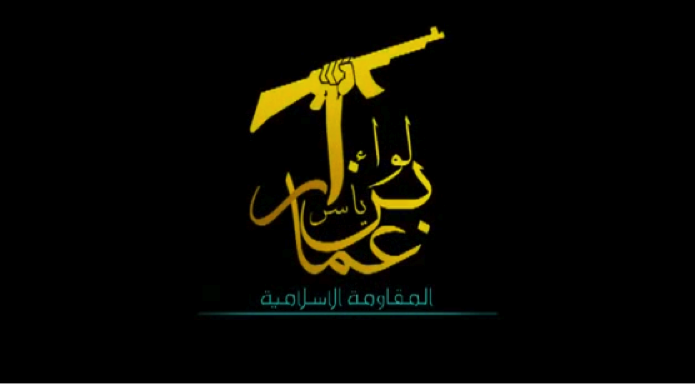
Figure 1: The logo for Liwa’a ‘Ammar Ibn Yasir. The group’s name is stylized into a pattern which includes the Lebanese Hizballah/Iranian Revolutionary Guard Corps style symbol of a fist gripping an AK-47. (In Gold) “Liwa’a ‘Ammar Ibn Yasir” (‘Ammar Ibn Yasir Brigade) and (in blue) “Al-Muqawama al-Islamiya” (“The Islamic Resistance”).
Since the first announcement of organized Iraqi Shia fighting on behalf of the Assad regime in Syria, their geographic displacement in the country was often matched with their propaganda statements. Both Liwa’a Abu Fadl al-Abbas and Liwa’a Zulfiqar have stated on their multitude of social media platforms, videos, and through photographs, that their primary area of operation is Damascus. In particular, the Saydah Zaynab Shrine features heavily in their propaganda and the groups are self-proclaimed “Defenders” of the Shrine.
However, with the creation of Liwa’a ‘Ammar Ibn Yasir (‘Ammar Ibn Yasir Battalion or LAIY), the “Defenders of the Saydah Zaynab Shrine” narrative is now encompassing an organization which—according to its statements and other sources—does not operate in Damascus or directly maintain a presence at the Saydah Zaynab Shrine. In fact, LAIY advertises the fact that it is operating in the areas surrounding the northern Syrian city of Aleppo. In videos released by the group onto YouTube, the films’ titles proclaim LAIY fighters are present in rural sections of Aleppo. While this could not be independently confirmed, it would appear the group is attempting to cast another narrative that LAIY is the pro-Assad Shia militia organization which handles combat operations in the Aleppo area.
The fact the group is announcing it is operating in Aleppo is very important when assessing the manner Iranian-backed Shia militias have been utilized in Syria. Initially, most analysts and journalists have acknowledged these groups have fought around the Saydah Zaynab Shrine in Damascus or, as with Lebanese Hizballah, fought at Qusayr. This represents a major departure from the accepted line and shows that Iraqi-staffed Shia militias are likely operating in other urban areas throughout the country.
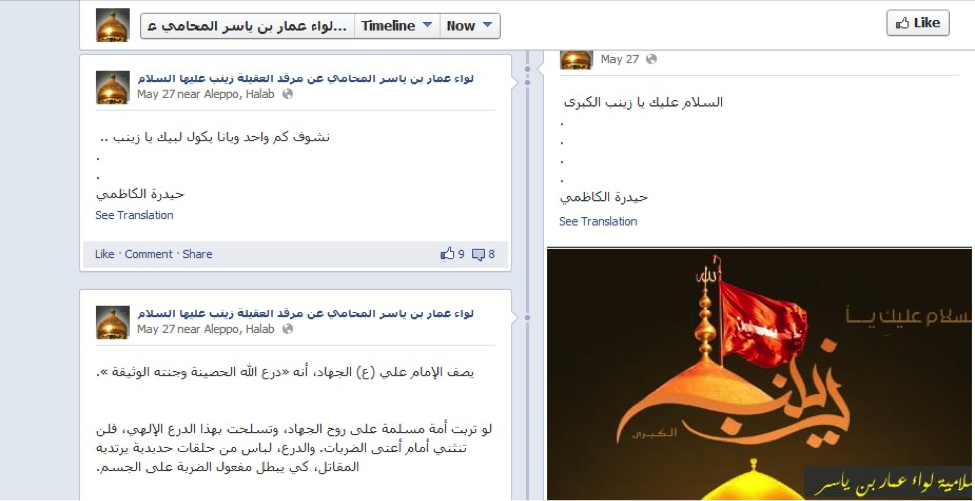
Figure 2: Since the creation of LAIY’s official Facebook page, the group has made attempts to demonstrate they are posting statuses from Aleppo.
Initially, LAIY announced their presence to the world through the creation of a Facebook page made at the end of May, 2013. The page only posted basic status updates including quotes from Lebanese Hizballah General Secretary and in a blatant display of their loyalty to Iran, postings of two photographs featuring Iranian Supreme Leader Ayatollah Ali Khamenei. The caption for one of the photographs read, “Labayka ya Khamenei” (“We are here for you, O Khamenei”). Other early photographs emphasized the same “Defenders of the Saydah Zaynab Shrine” narrative first promoted by Liwa’a Abu Fadl al-Abbas and Lebanese Hizballah.
The logic behind the continuance of the “Defenders of the Saydah Zaynab Shrine” narrative for a group not directly defending it, is likely a way to express that despite LAIY not directly defending the shrine, the very fact they are countering anti-Assad forces in other parts of Syria helps save the shrine. Extending the narrative in this way allows for later potential announcements addressing the presence of other pro-Assad Shia militia in other areas of Syria. The rhetoric also acts and as a blanket explanation for why the groups’ directly cooperate and back the regime of Bashar al-Assad. For LAIY’s messaging campaign, it is key to demonstrate that backing Assad on all fronts means the Saydah Zaynab Shrine and other Shia religious structures will be protected.
Off of the internet, LAIY made its presence known in the same way Kata’ib Sayyid al-Shuhada did during the Spring of 2013; Via extravagant funeral cum demonstrations for fallen members of the organization. On June 4, a large funeral in Iraq’s Maysan was held for seven members of LAIY. Like Kata’ib Sayyid al-Shuhada, at the group funeral, representatives from the organization announced they would defend shrines, “All over the world”.[1]
LAIY has also exhibited a number of advanced messaging strategies. When the organization was announced, it already had its own song (posted below), a symbol, fighters dressed in similar combat fatigues, and a clear messaging strategy to address its presence in Syria.
LAIY’s Name
Liwa’a ‘Ammar Ibn Yasir takes its name from ‘Ammar Ibn Yasir. Described by historian Matti Moosa as, “one of Ali’s [considered by Shia to be the Islamic prophet Muhammed’s true successor for leadership of the Muslim community] most zealous companions and champions”, Yasir is revered by Shia for his loyalty.[2]
The group’s name also references the tomb of ‘Ammar Ibn Yasir which was located in Raqqa, Syria. The tomb was blown-up by Sunni Islamist rebels forces in March, 2013. These forces also recorded the destruction of the tomb and distributed their video online.[3] The video then made its rounds on pro-Assad media outlets. In terms of narrative development, the adoption of the name of a destroyed Shia shrine in Syria further underlines the line the group previously established as, “Defenders of shrines”.
Nevertheless, there have been no specific mentions of the destruction of ‘Ammar Ibn Yasir’s tomb via the group’s statements to the media or through their social media presence.
LAIY’s complete name is, Al-Muqawamah al-Islamiya fi Iraq Liwa’a ‘Ammar Ibn Yasir Hizballah al-Nujaba’ (The Islamic Resistance In Iraq ‘Ammar Ibn Yasir Brigade Hizballah Movement of the Outstanding). Adding further complication to the group, LAIY claims to be a part of Harakat Hizballah al-Nujaba’ or Harakat al-Nujaba’ (The Hizballah Movement of the Outstanding). This group, in and of itself, is also new. Harakat Hizballah al-Nujaba’ draws its name from the regularly used “Hizballah” term, a name found and utilized by a multitude of Iranian-backed organizations. It has also added that it is a “Harakat” or “movement”, most likely a way to appear as if it has greater numbers. The addition of the term, “al-Nujaba’” (plural for “The Outstanding”) references a term sometimes used in relation to the return of Imam al-Mahdi (for Shia, the Mahdi will return in a messianic form and establish a truly just earthly regime).[4]
LAIY’s Links, & Ideology
Based on the large amount of imagery, videos, and direct statements praising Iran’s Supreme Leader, Ayatollah Khamenei and repeated insistences where the group has said it is, “at Khamenei’s service”, LAIY does not hide its allegiance to Iranian leadership and ideology. The utilization of the exact “Defense of the Saydah Zaynab Shrine” narrative, honed by Lebanese Hizballah, Iran, and Iran’s many Iraqi Shia proxies—Many of whom have contributed fighters to the battle in Syria—also demonstrates a mirroring of larger Iranian strategies.
Sheikh Akram al-Kaabi, a founder and leader of Asa’ib Ahl al-Haq, an Iranian-backed organization which has lost members in Syria, has also featured prominently in LAIY propaganda. Al-Kaabi has described as a “Leader” by the group’s Facebook page and on posters the group has issued. The link to Asa’ib Ahl al-Haq further suggests LAIY and Harakat Hizballah al-Nujaba’ may be front groups for other existing Iranian-backed Iraqi Shia parties. Additionally, imagery used for martyrdom posters matches those found with Asa’ib Ahl al-Haq. These posters normally feature Grand Ayatollah Muhammed Sadiq al-Sadr and Iranian Supreme Leader, Grand Ayatollah Khamenei with a dark background or one featuring the Saydah Zaynab Shrine (see: Hizballah Cavalcade’s Roundup of Iraqi’s Killed in Syria, Parts 1, 2, and 3).
The utilization of the phrase, “Islamic Resistance” has also been a hallmark for Iranian-created organizations and has made a strong presence among the multitude of groups under Tehran’s guidance. Lebanese Hizballah calls itself, “Al-muqawama al-islamiya fi lubnan” (“The Islamic Resistance in Lebanon”).[5] Both Asa’ib Ahl al-Haq and Kata’ib Hizballah have characterized themselves as the “Islamic Resistance in Iraq”.[6] Iranian-backed Iraqi groups have been utilizing the phrase more since May, 2013. In one Basra propaganda poster, the “Islamic Resistance” name was used by Asa’ib Ahl al-Haq. According to LAIY’s Facebook page, the group offers a self-description as “Al-muqawama al-islamiya fi suriya” (“The Islamic Resistance in Syria”).
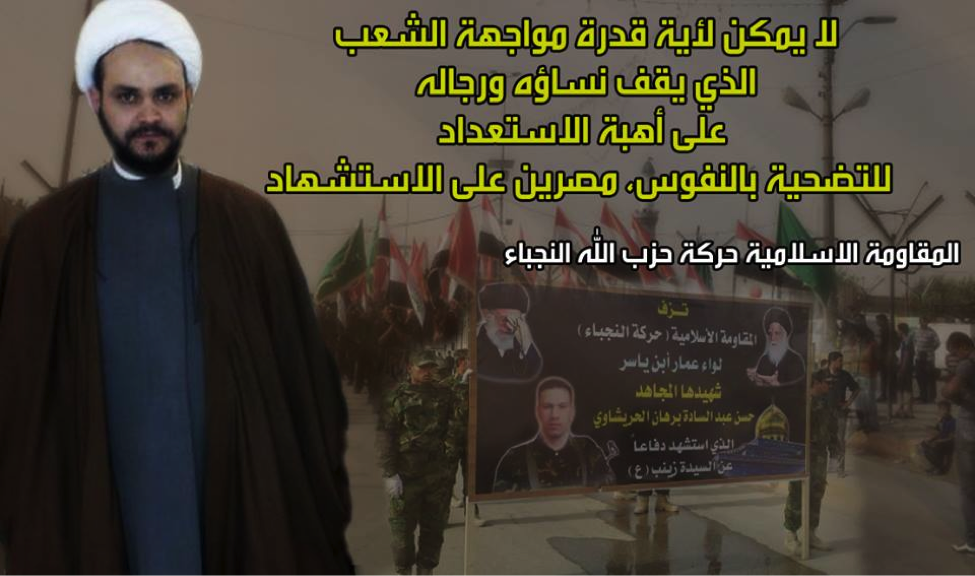
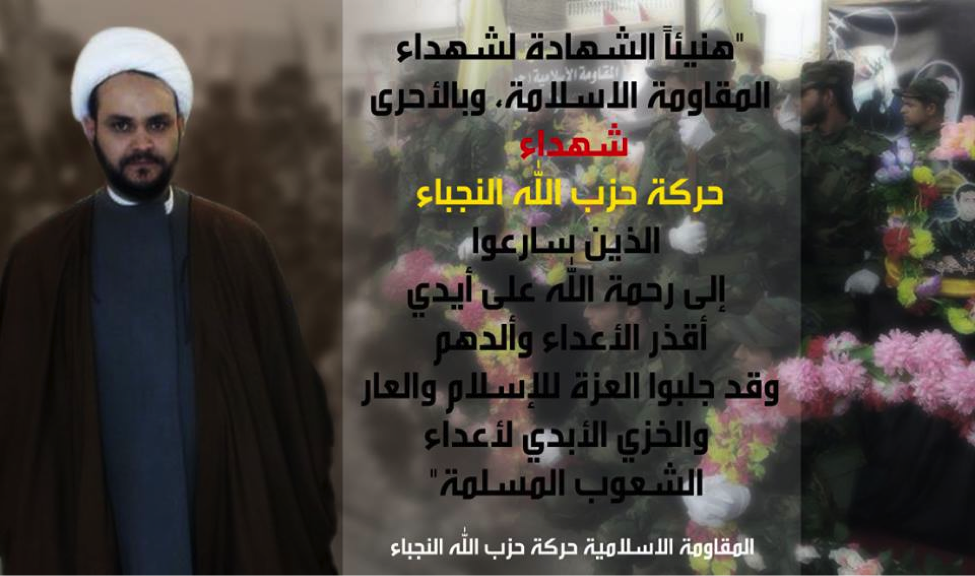
Figure 3: Two LAIY propaganda posters featuring Asa’ib Ahl al-Haq’s Sheikh Akram al-Kaabi.
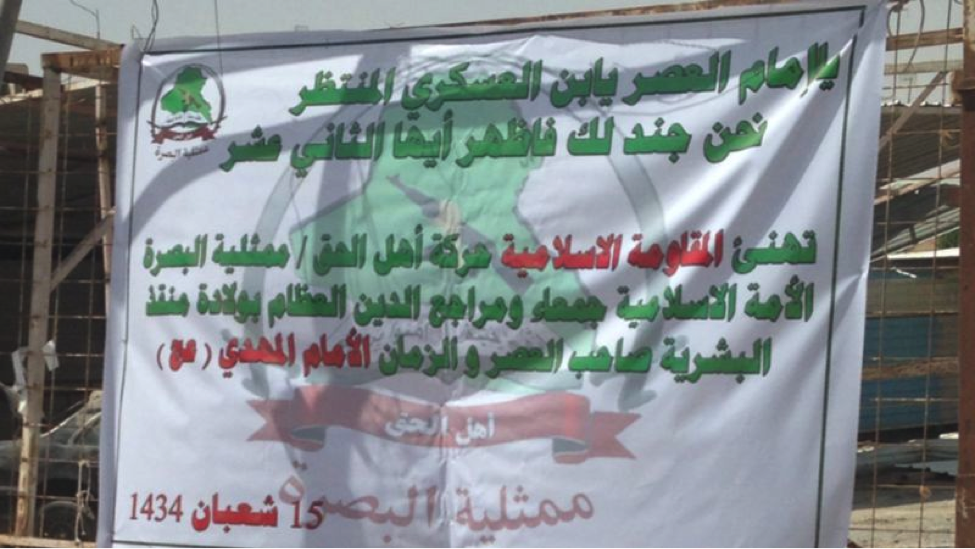
Figure 4: A sign for Asa’ib Ahl al-Haq in Basra from the “Islamic Resistance” (Photo Credit: Anonymous source in Basra). The poster was put up in late June, 2013.
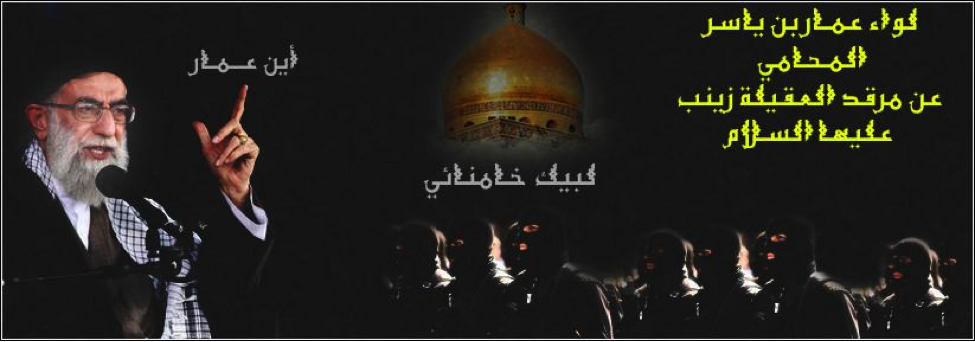
Figure 5: Underneath the dome for the Saydah Zaynab Shrine there is text reading, “Labayka Khamenei” (“We are here for you Khamenei”). On the left, the Iran’s Supreme Leader strikes a forceful pose with masked fighters gazing up at him. The photo serves as the banner image for LAIY’s Facebook page.
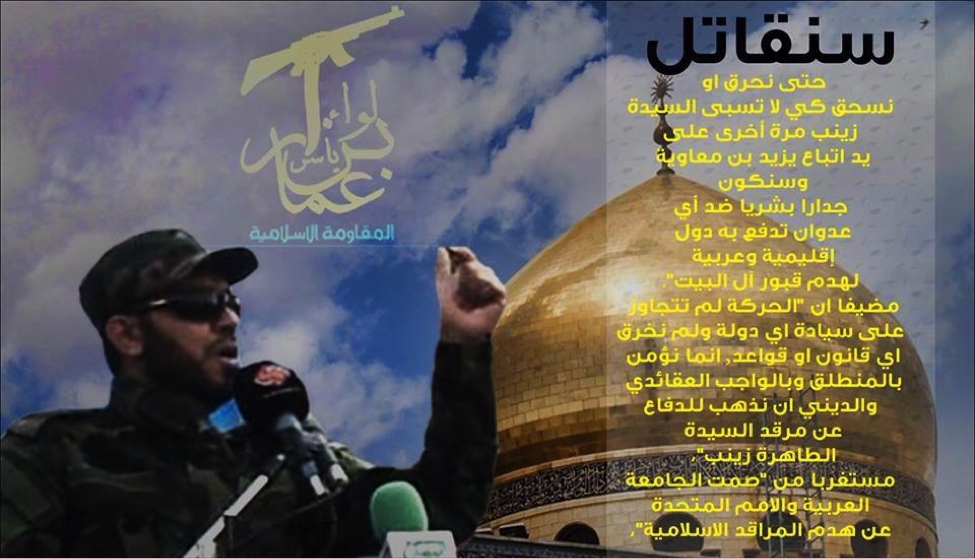
Figure 6: A LAIY spokesman, observed at the June 4th group funeral, is shown with the golden dome of the Saydah Zaynab Shrine, LAIY’s logo, with his remarks about how the organization will address those who engage in the “Demolition of graves”.
Pan-Shia Sectarian Themes
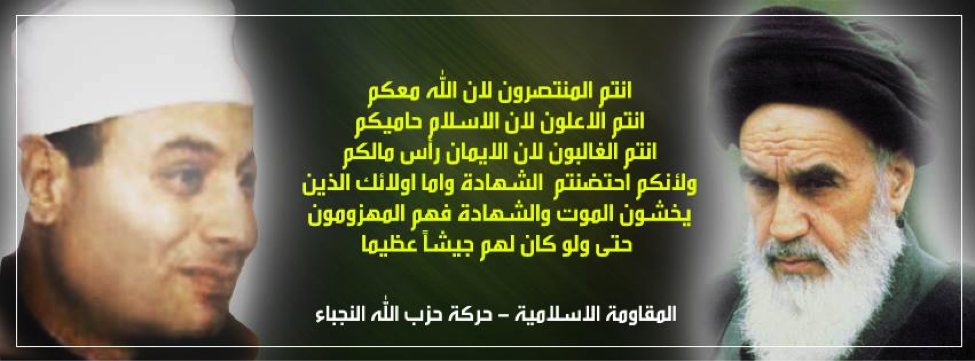
Figure 7: A poster from LAIY linking the lynched Sheikh Hassan Shehata to Iranian ideologue and first Supreme Leader for the Islamic Republic of Iran, Grand Ayatollah Khomeini.
Iranian media outlets have regularly reported attacks on Shia shrines as part of a conspiratorial narrative where US and Israeli-backed Sunni Islamists have initiated a global campaign against Shi’ism.[7] When Egyptian Shia leader Sheikh Hassan Shehata and four other Shia were brutally murdered by a mob, Iranian propaganda covered the lynching as another example of “Takfiri extremists” targeting the Shia.[8] While this is not entirely false, their reporting of the incident was an attempt to link the event to the Iranian narrative on Syria. This line says that the West and Israel are backing “Takfiris” (note: All rebels are branded as “Takfiris”) in order to destroy Islamic unity and destroy the Shia. In a May 27th Facebook post, LAIY utilized the “U.S. and Zionist” conspiracy narrative to praise the success of “Jihadist media” (meaning Iranian-backed Shia jihadists) in the face of such opposition.
The attempt to draw Shehata as in some way ideologically or religiously related to Khomeini is also a way for the group to lump all Shia under the Iranian ideological umbrella. Additionally, it also attempts to show how Iranian-backed groups like LAIY are the only organizations defending Shi’ism.
LAIY took these concepts and produced a poster to commemorate Shehata’s murder and attempt to convey that they would defend against future incidents like his public lynching. For the increasingly targeted Middle Eastern Shia community, it is possible LAIY was attempting to play off of sentiments for the need to defend Shi’ism.
LAIY’s Martyrs
Reportedly, seven members of LAIY had a group funeral in Iraq’s Maysan province on June 4, 2013. While limited recordings of the funeral are available, not all of the dead could be positively identified. On July 3, 2013 another, older member of LAIY was announced as having been killed in Syria via LAIY’s Facebook page.
Interestingly, LAIY members who have been killed have been referred to (individually) as, “Shaheed al-Jihad” (“Martyr of the Jihad”) as opposed to the phrases “Shaheed al-Batal” (“The Hero Martyr”) or “Shaheed al-Mujahid” (“The Holy Warrior Martyr”). The latter two are commonly used by other Iraqi Shia groups who have lost fighters in Syria.
__
Name: Hamid Abd al-Hasan ‘Ali
Death Announced: July 3, 2013
Notes: Hamid Abd al-Hasan was described in a few posts as a commander of LAIY forces. His older age may also indicate his role as some type of a leader for the group’s fighters in Syria.

Figure 8: An announcement for the death of Hamid Abd al-Hasan ‘Ali. The deceased Iraqi Ayatollah Muhammed Sadiq al-Sadr looks on from the left side of the poster.
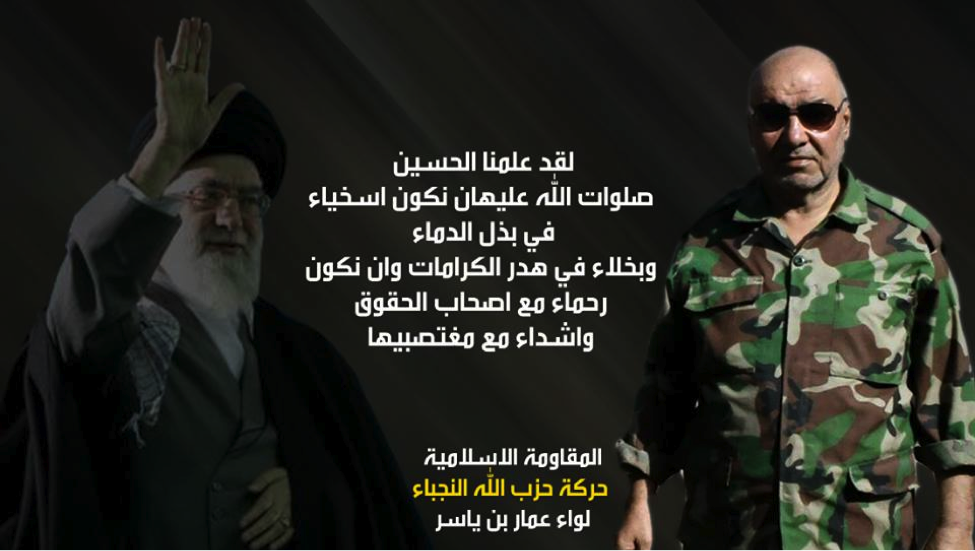
Figure 9: Iranian Supreme Leader Ayatollah Khamenei in a martyrdom announcement/poster with Hamid Abd al-Hasan ‘Ali.
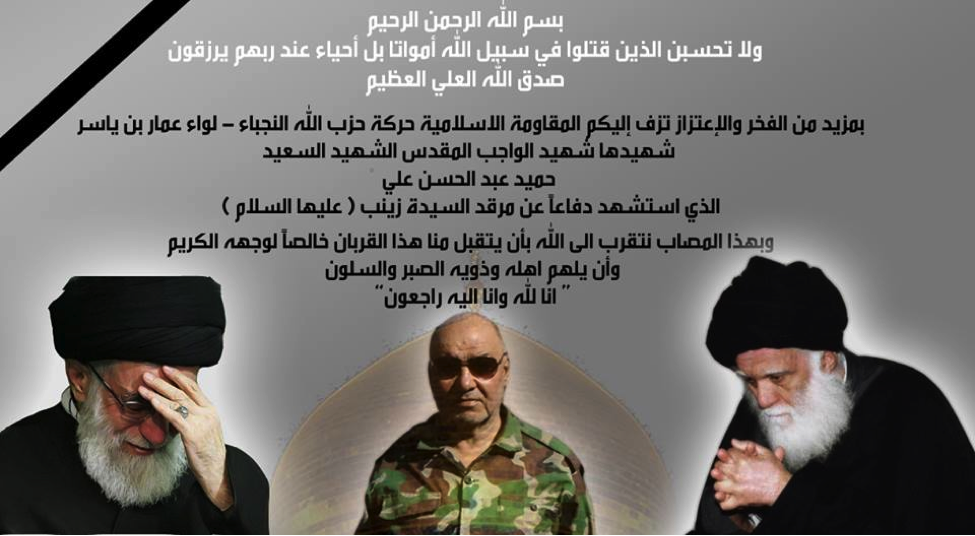
Figure 10: Both the Iranian Ayatollah Khamenei (left) and the late Iraqi Ayatollah Muhammed Sadiq al-Sadr (right) hold their heads in sadness. Hamid Abd al-Hasan ‘Ali is pictured in the middle in front of the dome for the Saydah Zaynab Shrine.
Name: Husayn ‘Abd al-Sadah
Death Announced: June 4, 2013
Notes: Funeral was held alongside other LAIY dead during the group funeral in Maysan.
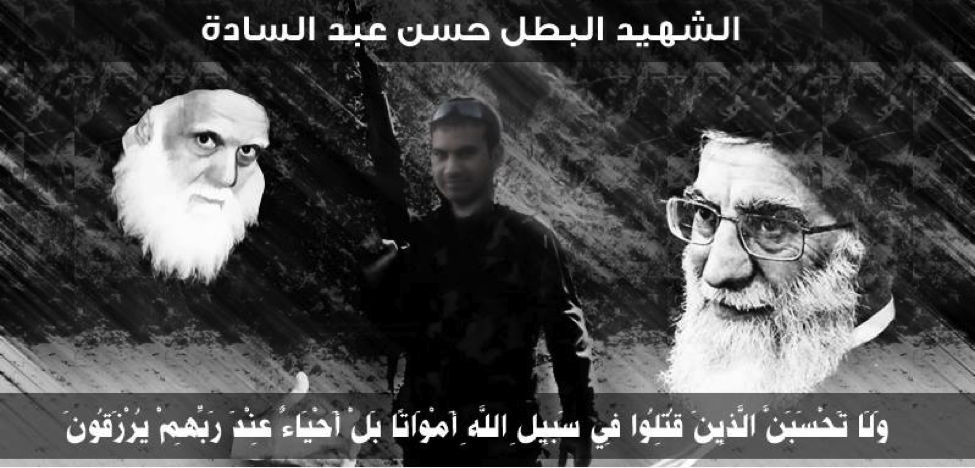
Figure 11: Husayn ‘Abd al-Sadah is shown holding an AK-47 type rifle with the late Iraqi Grand Ayatollah Muhammed Sadiq al-Sadr (left) and Iran’s Supreme Leader, Ayatollah Khamenei (right).
Name: Mustafa Muhammed al-‘Abadi
Death Announced: June 4, 2013
Notes: Funeral was held alongside other LAIY dead during the group funeral in Maysan.

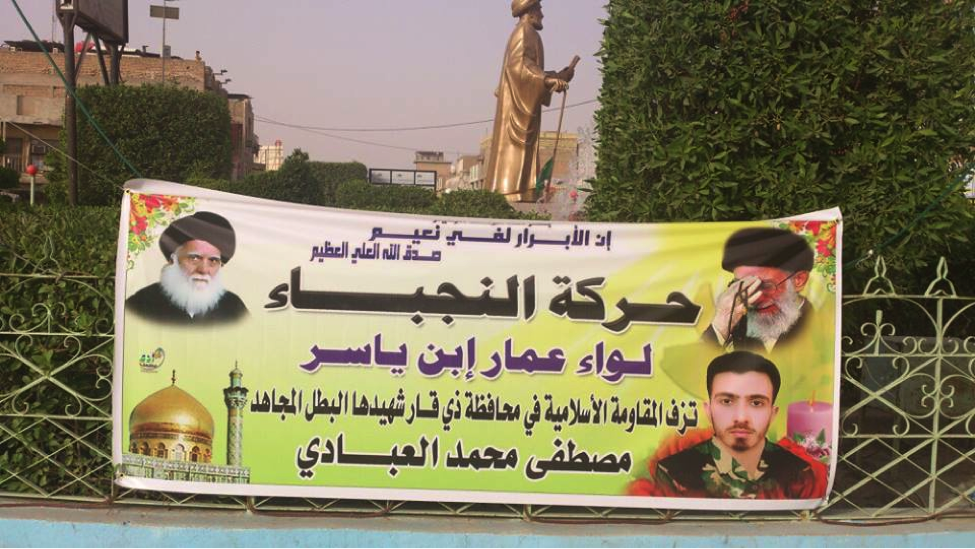
Figure 12: A photo of Mustafa Muhammed al-‘Abadi’s martyrdom poster taken in Nasiriya, Iraq. The poster claims he was a member of “Harakat al-Nujaba’ Liwa’a ‘Ammar Ibn Yasir” (“Movement of the Outstanding ‘Ammar Ibn Yasir Brigade”).
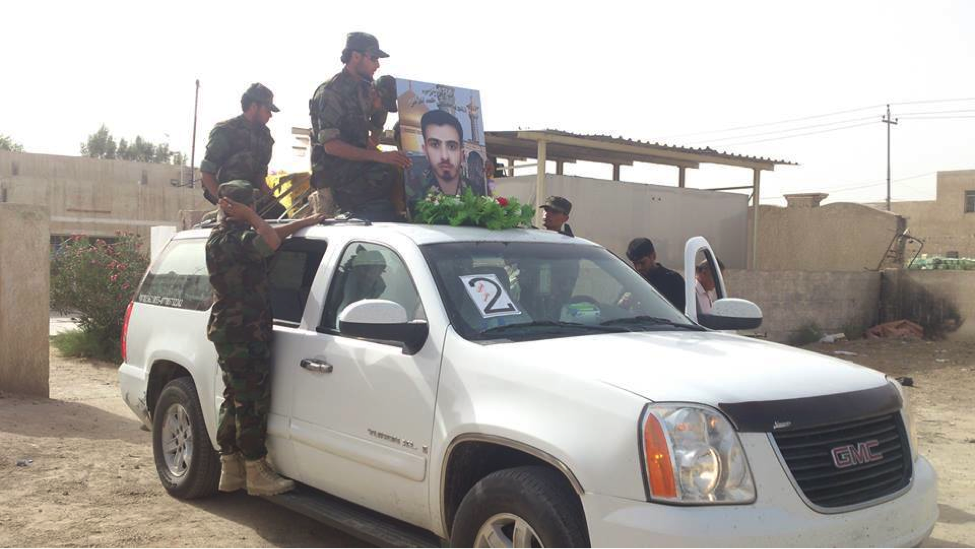
Figure 13: A GMC Yukon was used as a hearse (his coffin was placed on the roof) for al-‘Abadi as it drove with other vehicles carrying other LAIY fighter’s bodies.

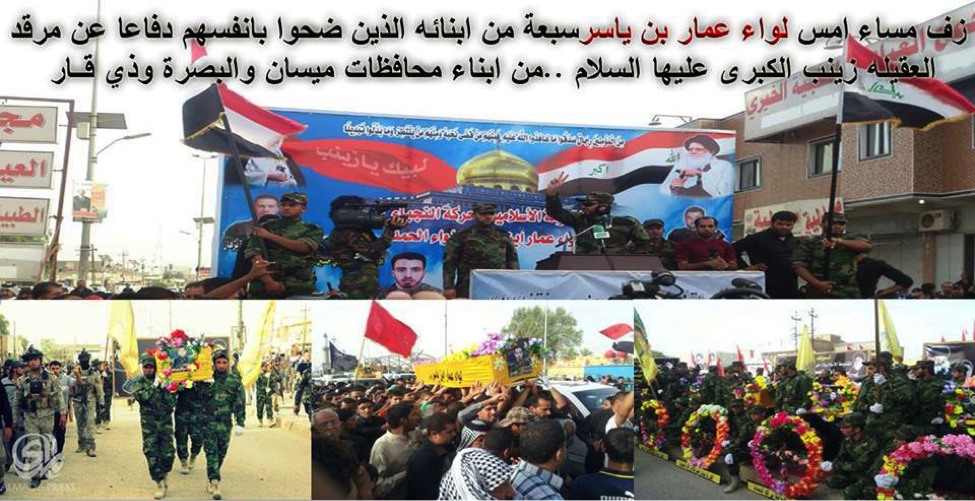
Figure 14: A compilation of the June 4th group funeral photos posted by the group on June 5, 2013.
Name: ‘Abbas Fadhl
Death Announced: June 4, 2013
Notes: Funeral was held alongside other LAIY dead during the group funeral in Maysan.

Figure 15: It would appear the same photograph which was used for Husayn ‘Abd al-Sadah had Fadhl’s head pasted into place.
Name: ‘Ali Husayn Jaber
Death Announced: June 4, 2013
Notes: Funeral was held alongside other LAIY dead during the group funeral in Maysan.
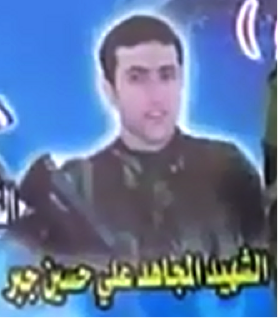
Figure 16: A vid-capture of a larger martyrdom poster with Jaber’s face.
Name: Abbas Fadhl Qasim (al-Sudani)
Death Announced: June 4, 2013
Notes: Funeral was held alongside other LAIY dead during the group funeral in Maysan.
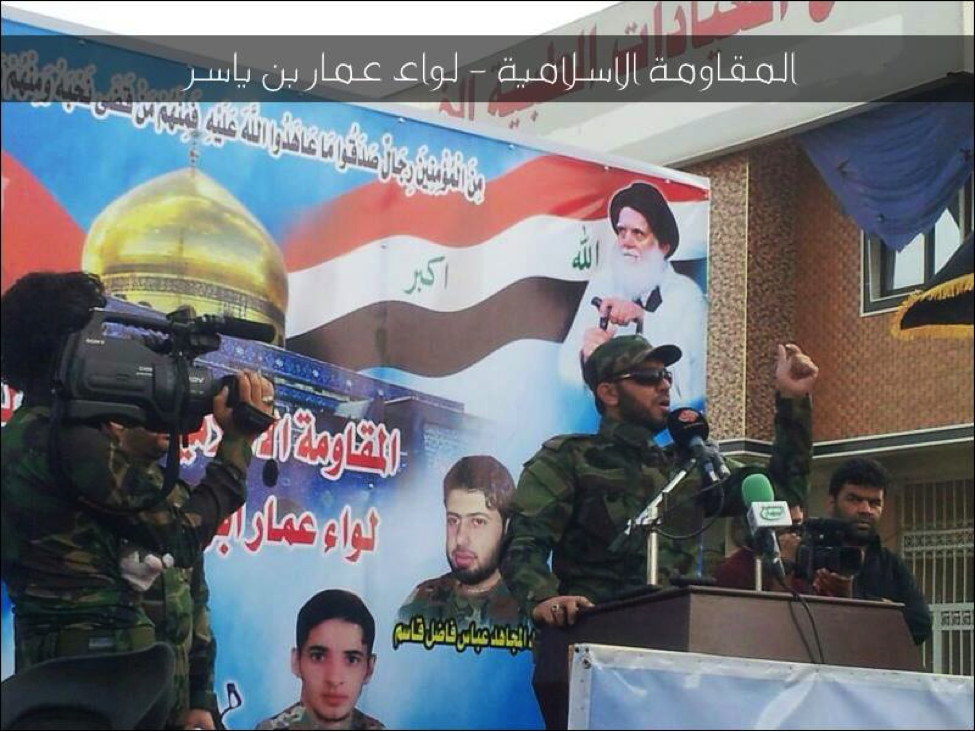
Figure 17: A headshot of the bearded Qasim can be seen behind a LAIY spokesman and in front of the Saydah Zaynab Shrine.
Name: Hasan ‘Abd al-Sada Burhan
Death Announced: June 4, 2013
Notes: Funeral was held alongside other LAIY dead during the group funeral in Maysan.
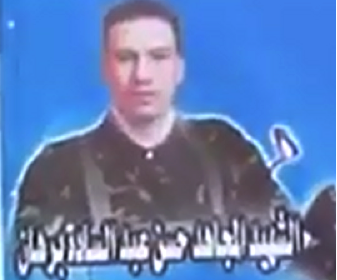
Figure 18: A vid-capture of a larger martyrdom poster with Burhan’s face.
Name: Husayn Jaber al-Maliki
Death Announced: June 4, 2013
Notes: Funeral was held alongside other LAIY dead during the group funeral in Maysan.
*No photo available*
Name: ‘Alla’ Muhammed Salman al-Nasimi
Death Announced: June 4, 2013
Notes: Funeral was held alongside other LAIY dead during the group funeral in Maysan.
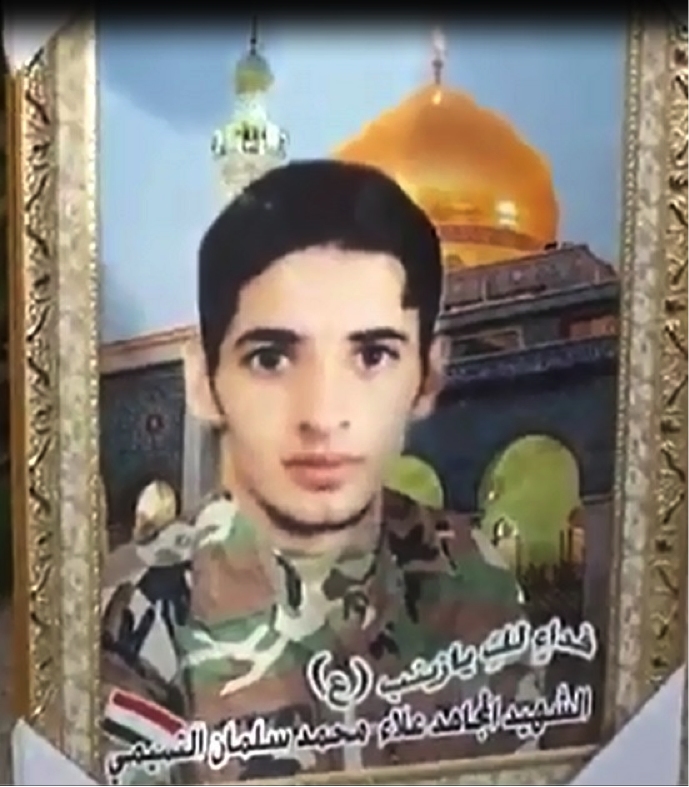
Figure 19: A screen-capture of Nasimi’s martyrdom poster. As with posters for members of Liwa’a Abu Fadl al-Abbas, Lebanese Hizballah, and Iraqi Shia groups, the dead individual’s head shot is placed in front of a photo of Damascus’s Saydah Zaynab Shrine.
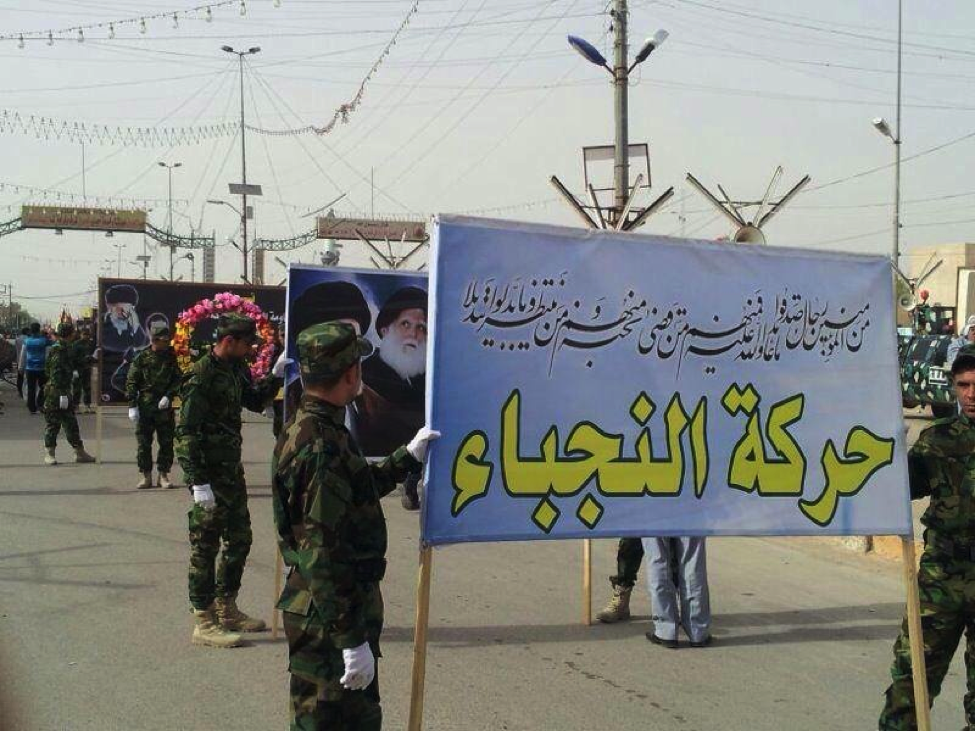
Figure 20: A shot of the LAIY honor guard at the June 4, 2013 group funeral. The first sign prominently displays, “Harakat Al-Nujaba’.”
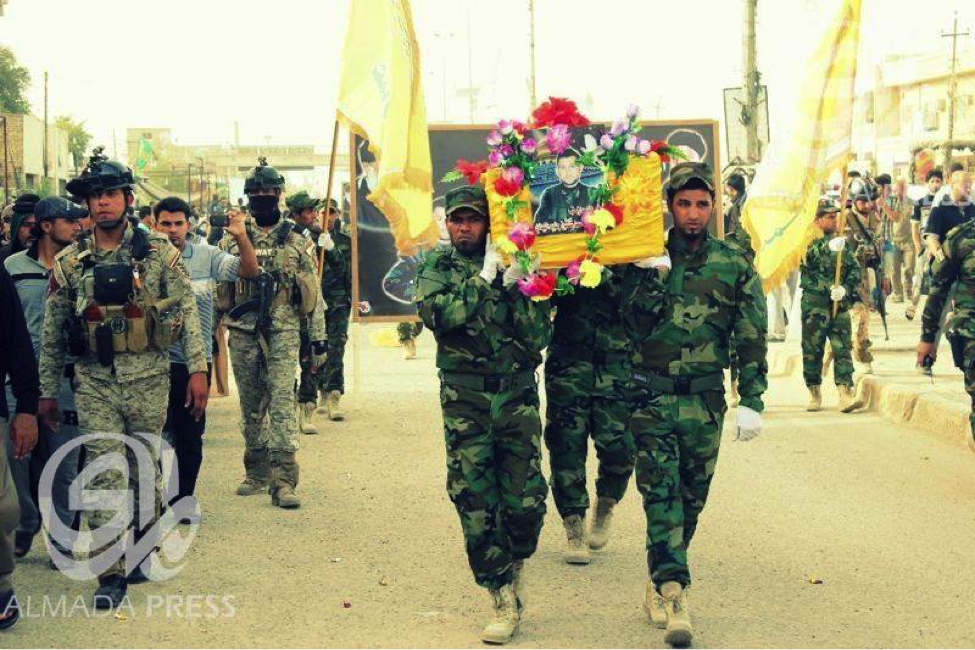
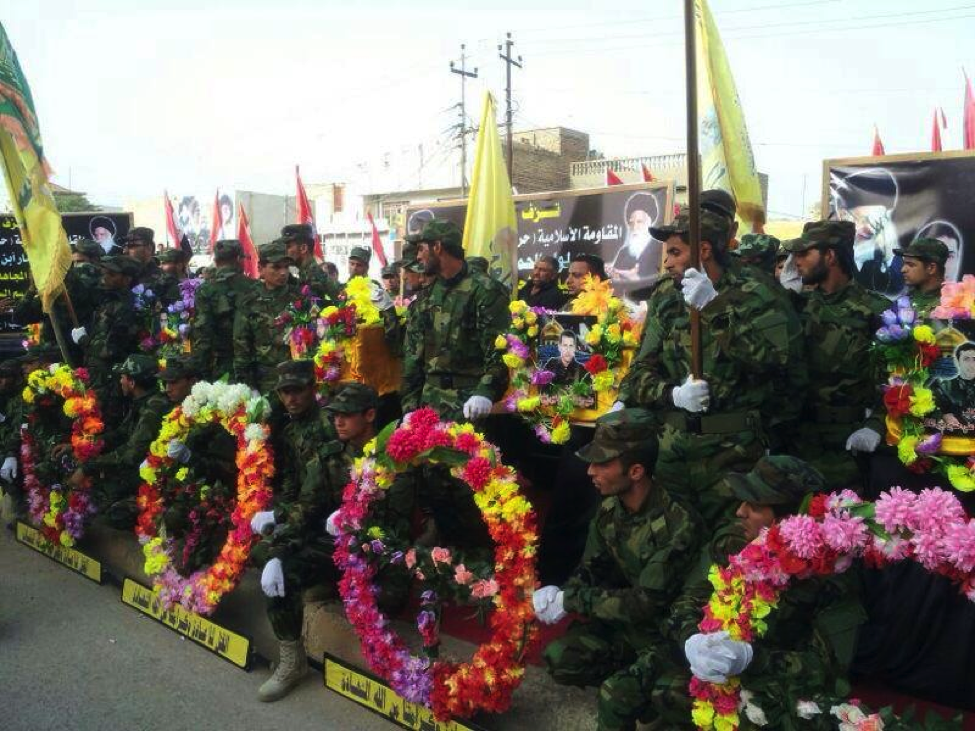
In videos of the funeral, those present chanted, “Labayka ya Zaynab” (“We are here for you, O Zaynab”). In two of the videos, LAIY’s official anthem can be heard being played by trucks carrying speakers. Posters with the late Iranian radical leader, Grand Ayatollah Khomeini, his successor and Iran’s current Supreme Leader Ayatollah Khamenei, and late Iraqi Grand Ayatollah Muhammed Sadiq al-Sadr are present.
Combat Videos
Most of the major videos have come from a YouTube account by the name of, “Kata’ib Jaysh al-Mahdi” (The Mahdi Army Brigades). This name invokes memories of Iraqi religious and political leader, Muqtada al-Sadr and his Jaysh al-Mahdi (the Mahdi Army). Thus far, Sadr has been reluctant to send fighters to Syria and has had a complicated relationship with Iran’s leadership.[9]
Due to the fact that LAIY claims to be part of Harakat Hizballah al-Nujaba’ (Harakat al-Nujaba’) and the prolific photographs and posters featuring Iranian leaders Ayatollah Khomeini and Khamenei, it is more likely the group is utilizing general themes which would appeal to Sadrists to win greater Iraqi support.
Videos of LAIY engaged in combat first appeared in early July and were posted by two accounts and all of the videos were posted between late June and early July, 2013. In one of the videos, a captured Syrian rebel can be viewed tied-up while being questioned by a LAIY fighter, gunfire can also be heard. In another far more graphically violent video, LAIY fighters recorded Syrian rebels they killed.
It is interesting to note that LAIY fighters are wearing yellow ribbons on their clothing. This addition is often recognized by rebels as signifying these fighters are foreign Shia militants. Lebanese Hizballah donned the ribbons when they fought in Qusayr and it has been reported by some rebel sources that these ribbons are used by Liwa’a Abu Fadl al-Abbas in Damascus.
In two other videos, the poster of the clips claims to show LAIY fighters engaged in combat in the Aleppo area. One video is set to LAIY’s song and shows fighters firing a machine gun and carrying RPG-7s. In another video, also marked as having been from the Aleppo area, photos of LAIY members and video of LAIY members firing a machine gun, an RPG-7 from a roof, and holding RPG-7s can be viewed. Also, a photo LAIY fighters posing with a captured Sunni Islamist rebel jeep is present. The second video is also set the a song, “Support Those Who Defend Zaynab” (see the 4th music video from the bottom of the post), by Ali al-Delfi and Ahmed al-Sa’adi. The song directly praises Liwa’a Abu Fadl al-Abbas.
**Warning: Graphic Images**

Reblogged this on pietervanostaeyen.
Reblogged this on YALLA SOURIYA.